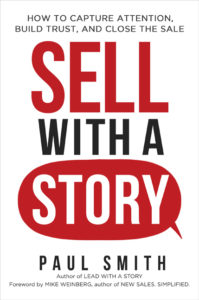Podcast: Play in new window | Download | Embed
Subscribe: RSS
Podcast (lead-with-a-story-podcast-series): Play in new window | Download | Embed
Subscribe: RSS
Giving feedback is a lot easier when the misstep is obvious once pointed out. Unfortunately, people sometimes have difficulty seeing even an obvious mistake when they’re the ones committing it. What can you do when others can’t (or won’t) see the error in their ways? Tell them a feedback story about someone else. One of the oldest examples of this is in the Old Testament of the Bible. Most Christians and Jews will recognize the story of King David and Bathsheba. But fewer are familiar with the powerful metaphorical story told by Nathan that follows it.
One of the oldest examples of this is in the Old Testament of the Bible. Most Christians and Jews will recognize the story of King David and Bathsheba. But fewer are familiar with the powerful metaphorical story told by Nathan that follows it.
According to the Book of Samuel, one evening King David got up from his bed and walked around on the roof of his palace. From the roof, he saw a woman in a nearby home—bathing! The woman was very beautiful, so the king sent one of his men to find out about her. Returning, the man identified her as Bathsheba, the wife of Uriah. Uriah was a soldier in the king’s army and was away at war. Undaunted, the king called her to his palace and slept with her. (To refuse the king’s request could be punishable by death.)
Later, King David sent word to the leader of his army instructing him to send Uriah to the front lines of the fighting, and then pull the other men back. His general did as the king commanded. As expected, Uriah died in the fight. King David then brought Bathsheba into his house and made her his wife.
A year later, the prophet Nathan went to see King David. One of the many job responsibilities of a prophet was to confront sin. Nathan reported to the king that there were two men who lived in town among them—one rich and one poor. The rich man had many sheep and cattle, but the poor man had only one lamb. The poor man raised that single lamb. It shared his food, drank from his cup, and even slept in his arms. It was like a daughter to him.
One day a traveler came to visit the rich man. But instead of slaughtering one of his own sheep or cattle, the rich man took the one lamb of the poor man to feed his visitor. When King David heard this he burned with anger. He said to Nathan, “As surely as the Lord lives, the man who did this deserves to die! He must pay for that lamb four times over, because he did such a thing and had no pity.”
“You,” Nathan told the king solemnly, “are that man.” Nathan explained that the king had many wives. Uriah had but one. “You struck down Uriah with a sword, and took his wife to be your own.”
Then King David said to Nathan, “I have sinned against the Lord.”
There was nothing else King David could say. Not only had he been found out, but he had convicted himself by passing judgment on the metaphorical “rich man” in the story Nathan told him.
Sometimes it’s difficult to understand the wrong we have done until we see it through someone else’s eyes. The metaphorical story gives us that glimpse from another perspective. If you’ve already tried giving the boss feedback in the more direct, traditional way, and they just don’t see it, you might consider Nathan’s method.
To use this technique in a business setting all you need to have is the equivalent of Nathan’s rich man/poor man story. Fortunately, most leaders have seen several examples of the poor performance they’re trying to correct with feedback. Select one of those examples sufficiently different from the situation you’re dealing with that it won’t be obvious. Tell the story of that situation, and ask your listener to identify the problem. Once he spots the problem you want him to see, it’s time to tell the king that he is that man, just in another situation.
[You can find this and over 100 other inspiring leadership stories in my book, Lead with a Story.]
—
 Paul Smith is one of the world’s leading experts on business storytelling. He’s a keynote speaker, storytelling coach, and bestselling author of the books Lead with a Story, Parenting with a Story, and Sell with a Story.
Paul Smith is one of the world’s leading experts on business storytelling. He’s a keynote speaker, storytelling coach, and bestselling author of the books Lead with a Story, Parenting with a Story, and Sell with a Story.


 Connect with him via email here.
Connect with him via email here.
Follow him on Facebook, LinkedIn, and Twitter.
Sign up for his newsletter here to get one new story a week delivered to your inbox.


